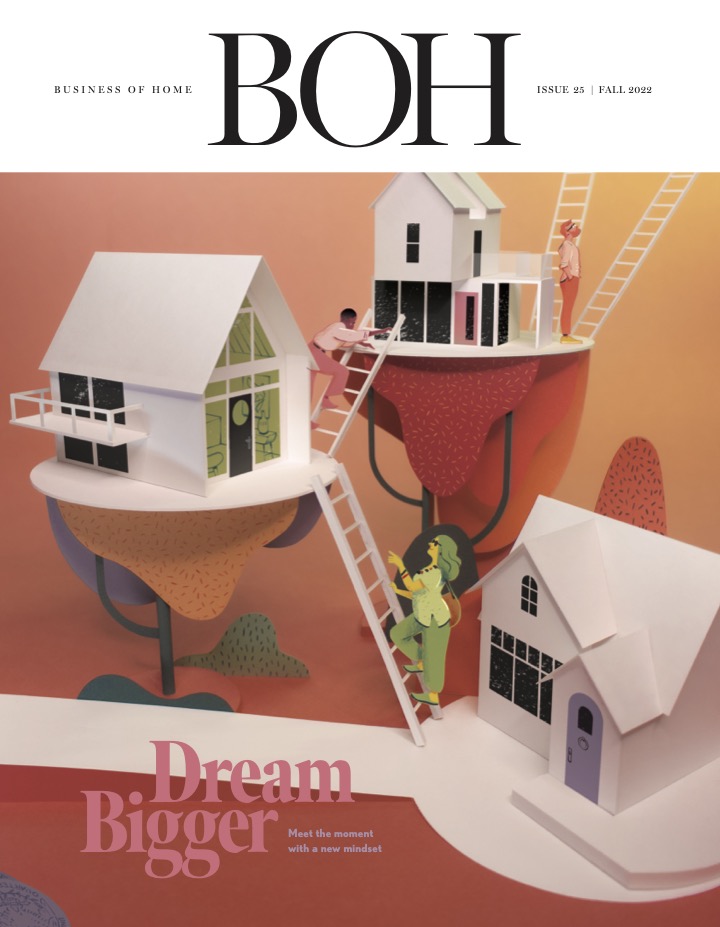The intersection between design and social justice may not be immediately obvious to the uninitiated, but a growing group of interior designers, architects, urban planners and other design professionals—organized under the name Design As Protest—is working to change that.
At its core, DAP focuses on the ways in which design and architecture have contributed to social inequity and how those disciplines can be used to rectify those inequities moving forward. Founded in 2015 by New Orleans architect Bryan Lee Jr., the organization was launched to address social injustices prevalent in architecture and urban planning—think metal dividers on park benches to prevent homeless people from laying down, or the lack of green spaces in predominantly minority neighborhoods. The collective was reinvigorated in the summer of 2020 following the murder of George Floyd. People of color from various disciplines across the design and architecture space found DAP, and the number of organizers involved swelled to more than 200.
“It was a time when so many of us were craving a sense of community,” says New York–based architect and urban designer Alexandra Gonzalez, the president and co-founder of Hive Public Space and one of DAP’s core organizers. “The fact that we were all able to work together towards the same goal felt like a perfect fit to me, and it’s been a labor of love for me ever since.”
Fauzia Khanani, the principal of New York–based architecture and interior design firm Studio Fōr, also joined the collective last summer, feeling the urge to connect with industry peers and find a way to contribute to the social justice movement.
DAP is organized around a series of nine social justice demands: the divestiture and reallocation of police funding; ceasing the implementation of hostile architecture; the abolition of carceral spaces; the restructuring of design’s relationship to power, capital and labor; involving community leadership in the design and planning processes; creating, protecting and reclaiming public space through planning and policy; cultivating just neighborhoods; preserving and investing in cultural spaces; and creating anti-racist models of design education, training and licensing.
On July 30, designer Sara Malek Barney equips designers with the critical skills to streamline their sourcing process as a means to enhancing profitability without sacrificing integrity—it even includes a discussion on the oft-overlooked topic of markups. Click here to learn more and remember, workshops are free for BOH Insiders.
Deena Darby, an architectural designer at Studio Fōr and a core organizer for DAP, says that though the nine tenets have been in place since 2015, they have changed in scope over the past 18 months. “It’s been a process to encompass new needs, but we’re always having conversations around the demands and how we can adapt,” she explains. “We’re currently discussing adding a 10th demand, which would focus on environmental justice as well. It’s always evolving.”
The non-hierarchical organization is focused on direct action. Recent campaigns include architectural installations to raise awareness of social justice issues from police violence to mortgage discrimination; pop-up memorials to lives lost due to police violence; outreach to urban youth; and a survey of design education to vet responses to calls for a more inclusive curriculum. In September, DAP was chosen by the Design Trust for Public Space in New York to develop alternative policies to hostile architecture by creating new design models that result in care versus harm.
“Hostile architecture and design happens in many different forms and scales,” says Darby. “Even the lack of public restrooms in New York could be considered a hostile choice,” she says. “Part of our mission is to map those instances out around the city.”
Khanani adds that hostile architecture is a good example of how design can exercise power and control over people’s behavior. “It controls access to spaces, giving preference to some groups over others,” she says.
While the ability to work towards progressive goals is a major draw for DAP’s members, Khanani, Darby and Gonzalez say that the community has also been invaluable. “There are a lot of different dynamics coming into the group, from students and their teachers to employees and their employers, but all that fades away in DAP,” says Darby. “Everyone is allowed to feel included and equal. Compared to other organizations that I've been involved with, that’s unique.”
For Khanani, joining DAP has brought many of her internal debates to a head. “I’ve been trying to ride this line of wanting my firm to pursue projects and clients related to social justice, but also being wary of being a minority within an industry that doesn’t look or think like me—that’s been really hard,” she says. “But finding this collective has been my backbone, and I’m more willing to take risks now. I’m starting to think, Why couldn’t we have a DAP collective of firms around the country, a network like Gensler or SOM? We have the opportunity to create something that doesn’t exist right now.”
Homepage photo: An installation created by DAP | Courtesy of DAP





























